
by Philipp Veit (1820)

Johannes Veit, originally Jonas Veit (2 March 1790, Berlin - 18 January 1854, Rome) was a German history painter. After 1811, he lived and worked in Rome, where he was a member of the Nazarene movement. [1]


Johannes Veit, originally Jonas Veit (2 March 1790, Berlin - 18 January 1854, Rome) was a German history painter. After 1811, he lived and worked in Rome, where he was a member of the Nazarene movement. [1]
He was born to the banker, Simon Veit, and his wife Brendel; daughter of the philosopher, Moses Mendelssohn. After his parents divorced, in 1799, he stayed in Berlin with his father. In 1805, he went to Hamburg and began an apprenticeship at Mendelssohn & Co., a private banking firm owned by his uncles, Joseph and Abraham Mendelssohn. Three years later, inspired by his brother Philipp, he decided to take up art instead, and enrolled at the Dresden Academy of Fine Arts, where he studied with Friedrich Matthäi.
In 1810, he and Philipp converted to Catholicism, as their mother had, two years before. It was then, at his baptism, that he took the name "Johannes". The following year, after a brief period working in Vienna, he moved to Rome, although he had originally planned to go to Paris. The occasion for his change of mind was his interest in the works of Gottlieb Schick, who was then living in Rome, and in poor health. Following Schick's return to Stuttgart, he befriended Friedrich Overbeck, and became involved in the Nazarene movement.
He was a slow, painstaking worker, who made very heavy demands on himself. As a result, his output was rather small. One of his most familiar works is an early "Adoration of the Shepherds", at St. Hedwig's Cathedral in Berlin.
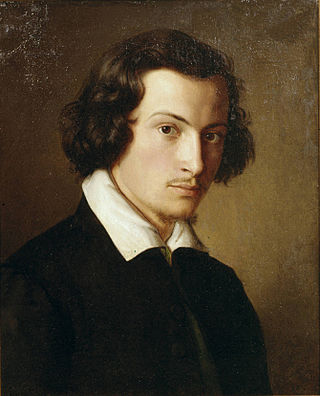
Philipp Veit was a German Romantic painter and one of the main exponents of the Nazarene movement. It is to Veit that the credit of having been the first to revive the nearly forgotten technique of fresco painting is due.

Julius Schnorr von Carolsfeld was a German painter, chiefly of Biblical subjects. As a young man he associated with the painters of the Nazarene movement who revived the florid Renaissance style in religious art. He is remembered for his extensive Picture Bible, and his designs for stained glass windows in cathedrals.

Peter von Cornelius was a German painter; one of the main representatives of the Nazarene movement.
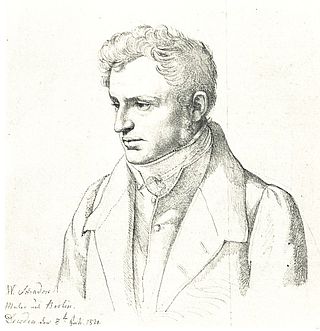
Friedrich Wilhelm von Schadow was a German Romantic painter.

The epithet Nazarene was adopted by a group of early 19th-century German Romantic painters who aimed to revive spirituality in art. The name Nazarene came from a term of derision used against them for their affectation of a biblical manner of clothing and hair style.

Johann Friedrich Overbeck was a German painter and a founder of the Nazarene art movement.

Carl Joseph Begas, or Karl Begas, was a German painter who played an important role in the transition from Romanticism to Realism. He was the first in a multi-generational "dynasty" of artists.
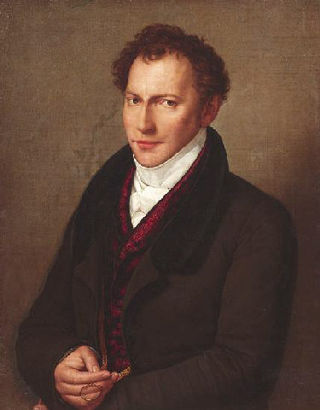
Jakob Ludwig Salomon Bartholdy was a Prussian diplomat and art patron.

Dorothea Friederike von Schlegel was a German novelist and translator.
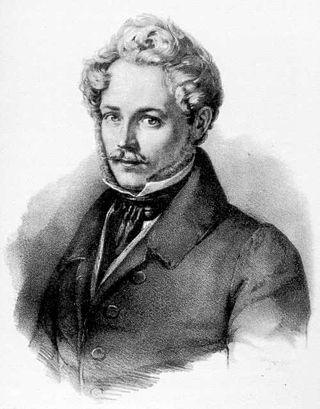
Ernst Fries was a German painter, draftsman, watercolourist, etcher, printmaker, and lithograph. Besides Karl Philipp Fohr and Carl Rottmann, he was the youngest of the so-called triumvirate of Heidelberg Romanticism. His works represent a transition from Romanticism to Realism.
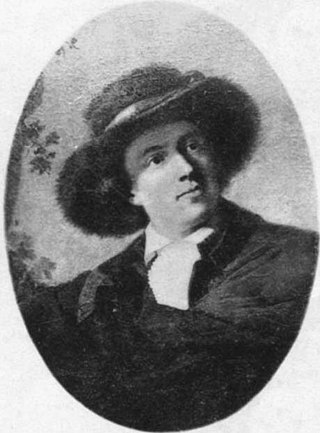
Philipp Friedrich von Hetsch was a German Classical painter, known primarily for his portraits, although he also created historical and mythological scenes.

Karl Philipp Fohr, a brother of Daniel Fohr, was a German painter, born at Heidelberg in 1795.
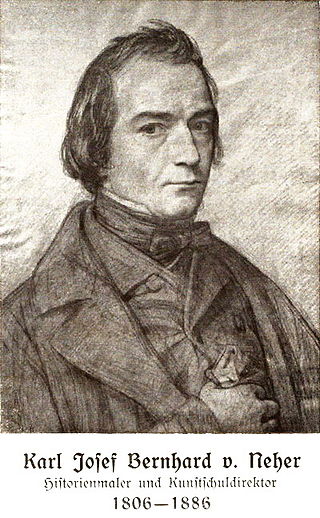
Karl Josef Bernhard von Neher was a German painter.
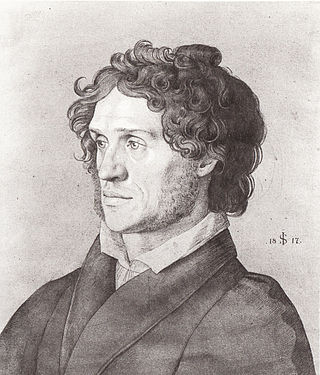
Johann Heinrich Ferdinand Olivier (1785–1841) was a German painter associated with the Nazarene movement.
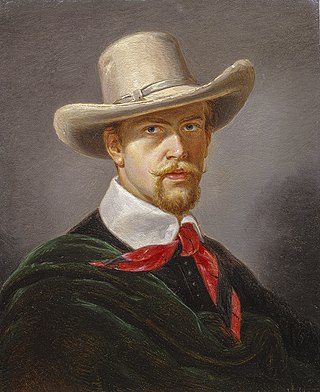
Joseph Anton Nikolaus Settegast was a German church painter and one of the last representatives of the Nazarene movement.

Erwin Speckter was a German painter, often associated with the Nazarene movement.

Ludovico Seitz, or Ludwig Seitz was an Italian painter of German ancestry, who served as Director of the Vatican Galleries.

The Temple of Juno in Agrigento is an 1828-1830 oil on canvas painting of by Caspar David Friedrich. It is now in the Museum für Kunst und Kulturgeschichte in Dortmund, which bought it from a Cologne art dealer in 1951. It is said to have been previously owned by the F. A. Brockhaus publishers in Leipzig.

Johann Jakob Jung was a German painter, specializing in religious subjects, and a member of the Nazarene movement.

Simon Veit was a German merchant and banker of Jewish ancestry.
![]() Media related to Johannes Veit at Wikimedia Commons
Media related to Johannes Veit at Wikimedia Commons